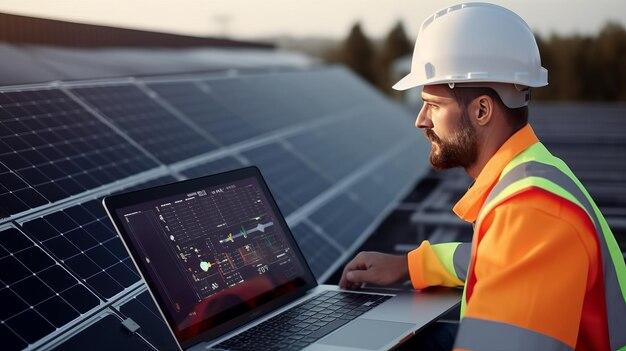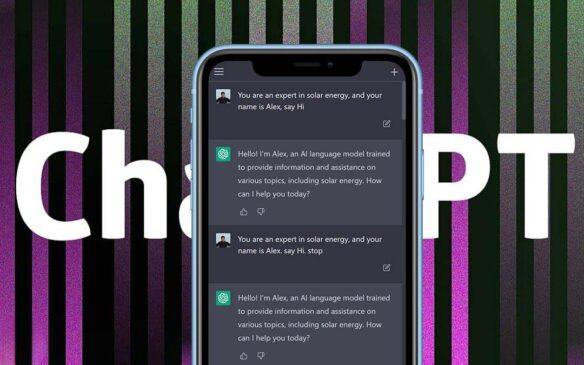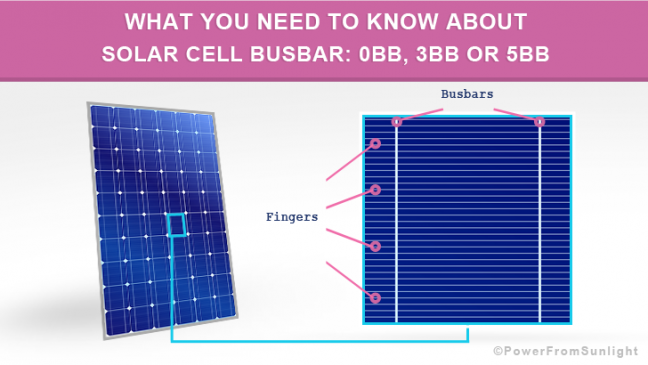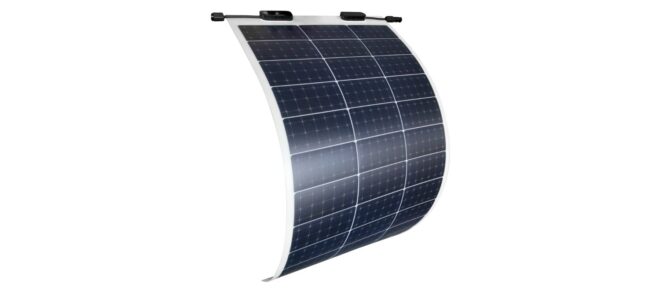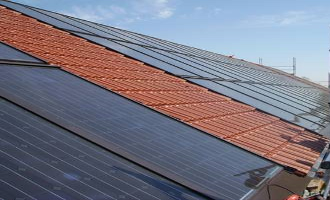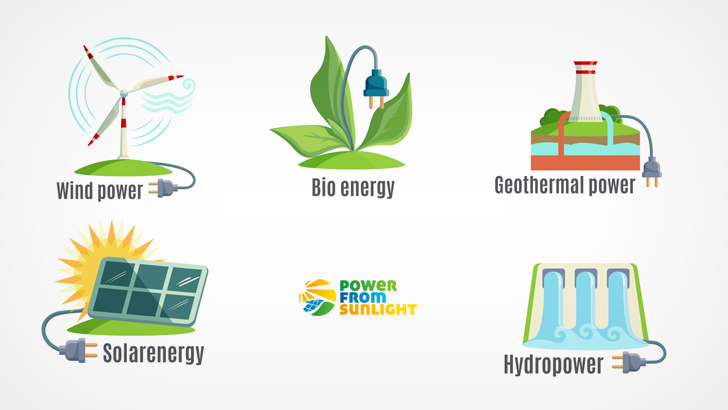
WHY Is A Solar Energy The Best Renewable Energy Source?
(Simple Explanation of Energy Terms and Comparisons of The Main Renewable Energy Sources)
This article explains in detail, why solar energy, especially Photovoltaics is the best renewable energy source.
WHAT IS RENEWABLE ENERGY?
Also referred to as alternative energy, renewable energy is energy that comes from sources that cannot be depleted.
The main renewable energy sources include:
- Sun
- Water
- Geothermal heat
- Wind and
- Biomass
5 TOP REASONS WHY RENEWABLE ENERGY IS EXTREMELY VITAL FOR THE SURVIVAL OF HUMANS
There are reasons why renewable energy is essential for the survival of man. Without renewable energy, man future would be brink.
The following are reasons why man needs renewable energy.
- Renewable energy sources such as the wind, the sun, and geothermal heat will never be exhausted through use.
- Increased use of renewable energy leads to less dependence on non-renewable energy source such as oil and gas.
- It is becoming more expensive to use non-renewable energy sources.
- Unlike oil and gas, renewable energy sources such as the wind and solar energy do not release greenhouse gasses into the atmosphere.
- Most of the renewable energy sources are the local resources which are widely available.
THE FIVE PRIMARY TYPES OF RENEWABLE ENERGY
There are five primary types of renewable energy which include:
- Solar
- Water
- Wind
- Geothermal and energy from Biomass.
Solar Energy
What is the definition of Solar Energy?
Solar energy is the energy that is received from the sunlight. Solar energy can be used with the aid of three main technologies:
- Photovoltaic
- Concentrated Solar Power (CSP),
- Solar thermal
By using those technologies, sunlight is turned into heat or electricity. Find comparisons between the three solar energy technologies in our article about why is a solar PV system the best technology of solar energy.
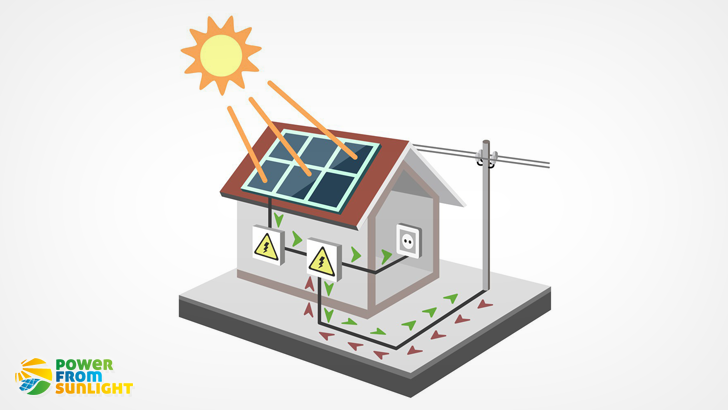
From Solar Energy to electricity
There are two methods to transform sunlight into electricity:
- To start with, solar Photovoltaic Technology, in which the solar panels trap sun rays and transform this solar radiation into current electricity.
A device called inverter converts the direct current generated by solar panels into the grid-compliant alternating current, which is what the most household appliances use. Find more information about solar inverter in our article about the Most important things to know about solar power inverter.
- Concentrated Solar Power technology (CSP); the most famous is parabolic trough plant, in which parabolic mirrors concentrate sunlight to heat water. The generated steam is used to turn steam turbines which generate electricity.
Heat from Solar Energy
Solar thermal technology uses solar thermal collectors to convert sunlight into heat. The generated heat is used for various purposes such as heating water, industrial processes, space heating as well as solar cooling.

Wind Energy
What is Wind Energy?
Wind energy is the energy that is derived from moving masses of air in the atmosphere.
This moving mass of air is used to operate a wind turbine which generates electricity.
Wind energy can also be used to pump water, push yachts through the water, as well as drive wind-powered sports among other uses.
How does Wind Energy work?
Blades are turned by the wind around a rotor. The rotor is connected to the main shaft which then spins the generator. Electricity is, therefore, created.

Water Energy (Hydropower)
What is Hydropower?
Hydropower is the power derived from the movement of large volumes of water.
How is hydroelectric Power generated?
Just as it happens with wind energy, turbines are spanned by the fast movement of water. The water turbines generate electricity.

Geothermal Energy
What is Geothermal Energy?
Geothermal energy is the heat energy that comes from the earth’s core.
How is Geothermal Energy harnessed?
Geothermal energy is harnessed through the following two methods.
- Geothermal Power Plant: a geothermal power plant harnesses the heat from deep within the Earth to produce steam which is used to generate electricity.
- Geothermal Heat Pumps: geothermal heat pumps harness heat from the ground and use it to heat water or for general room heating purposes.

Bioenergy
What is Bioenergy?
Bioenergy is energy from biomass. Biomass is material, which comes from animals and plant matter. Biomass includes:
- Bioenergy crops
- Agricultural residue
- Municipal waste organic component
- Industrial waste
- Forestry residue
How is Biomass used?
Biomass energy is used for various purposes:
- It can be burned to produce heat
- Biomass such as garbage, corn, and wood can be used to generate electricity
- Biomass can be transformed into biofuel which is used to run vehicles and fuel based engines.
WHAT IS THE BEST RENEWABLE ENERGY SOURCE?
Solar energy has many uses, which range from generating electricity and heating water to solar cooking and space heating.
There are other commercial and industrial uses of solar energy too. Solar energy can be used in its raw form for things such as heating water in a basin. It is used as a drying agent for both domestic and industrial purposes.
Let us compare solar energy, especially Photovoltaic with other types of renewable energy sources starting with Geothermal Energy.

Photovoltaic vs. Geothermal Energy
Photovoltaic energy offers solutions to power problems for both domestic and central uses.
On the other hand, the disadvantages of geothermal energy are:
- Only a few sites have geothermal energy potential
- Deep geothermal energy is expensive to exploit
- Geothermal energy may release harmful gasses into the atmosphere during exploitation
- There is no guarantee of return on investments in case of commercial exploitation
- Geothermal exploitation can cause surface Instability (earthquakes)
Geothermal energy has its advantages too, as it is weather independent and a good solution in geothermic regions, when the projects are well-scheduled and when the environmental protection is guaranteed.
However, photovoltaic is cheaper, safer, and cleaner and meets more power demands than geothermal energy.

Photovoltaic vs. Bioenergy
Bioenergy suffers from the following disadvantages:
- Biomass is not available for large-scale production
- Biomass energy is usually expensive to produce
- Land is used to produce energy, thus less space for food production
- Biomass power plants release greenhouse gasses (especially, carbon dioxide and methane) into the atmosphere
- Over-cultivation of biomass could lead to the destruction of water sources.
In conclusion, it is not ideal to have a competition for food with biomass. Food production must be prioritized. Also, bioenergy is not environmentally friendly, and its cultivation may encourage stress on soil nutrients and water resources. Further, it is expensive to produce energy from biomass.
Photovoltaic power is, therefore, recommended over bioenergy as it is cleaner, safer, unlimited, and cheaper.
If energy from biomass is to be used, it should be in cases where other renewable energy sources are not available or for small domestic purposes.

Solar Power vs. Hydropower
As opposed to solar energy, hydroelectric energy disadvantages are:
- Water flow and quality interferes with hydropower
- Hydropower stations compete for a location with other uses of land like farming.
- It is expensive to construct a hydropower power station
- Construction of a reservoir dam can alter the ecosystem and landscape
- If the dam overflows, there is a possibility of flooding, forcing people to move out of their homes.
Hydropower is ideal for countries with large volumes of water such as Brazil, and Norway but one must weigh up the pros and cons of having a hydroelectric power plant.
Photovoltaic energy offers more solutions to energy problems at a much cheaper rate.
Hydropower would be a great addition to photovoltaic in case the latter is not enough.

Solar Energy vs. Wind Energy
Solar and wind energy are the most efficient and important renewable energies. Both have local and central applications and are unlimited. However, the wind energy disadvantages are:
- Noisy as wind turbines are loud
- The high cost of installation and maintenance is prohibitive
- Birds die when they come into contact with turbines.
- Winds are unpredictable
- It only works in windy areas
Even though the wind as a renewable resource is unlimited, only a few areas have high winds for commercial production of electricity.
Wind energy should be used as an alternative to solar energy as the latter is accessible, clean, safe and environmentally friendly.
RESULT
According to these and other views, solar energy is by far the most convenient source of power for both domestic and central applications.
Locally, solar energy is used at home in the form of rooftop solar plant, while for central applications such as solar parks, it has been found not to contain environmental pollutants contained in Wind, hydropower, bioenergy and geothermal energies.
The relatively reduced cost of solar batteries coupled with the decrease in the cost of solar power makes photovoltaic an ideal source of power. Find more information about Photovoltaics in our article about from photovoltaic solar cells to the main types of solar panels.
Photovoltaic may not be enough to run the entire nation, and therefore, it calls for other renewable energy sources to be established.
In case solar and wind energies are not enough to meet the power demands, hydropower and geothermal energy emerge as the next best renewable energy sources.
Energy from Biomass should be used for emergency solutions and small household applications.



